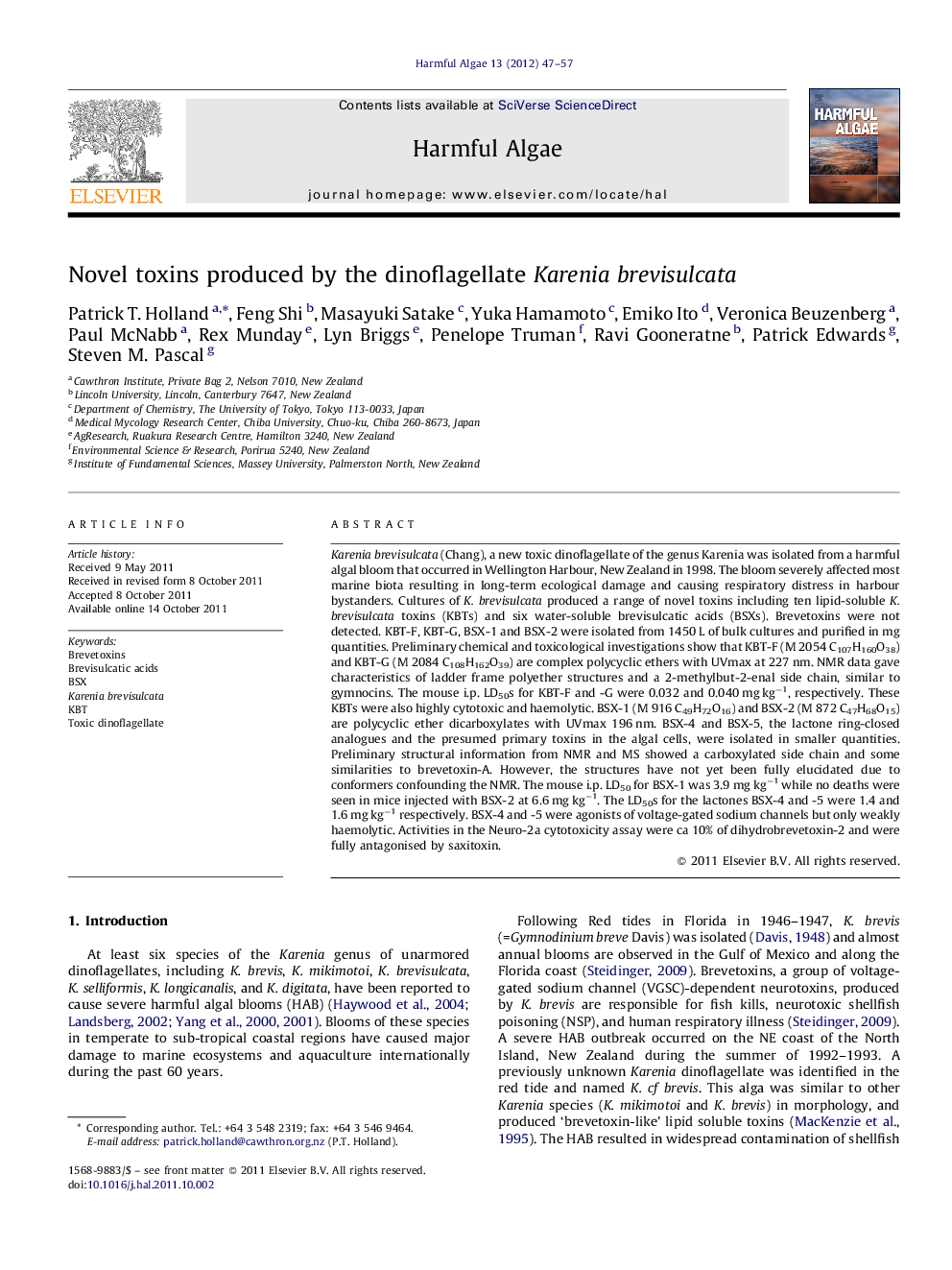| Article ID | Journal | Published Year | Pages | File Type |
|---|---|---|---|---|
| 4545655 | Harmful Algae | 2012 | 11 Pages |
Karenia brevisulcata (Chang), a new toxic dinoflagellate of the genus Karenia was isolated from a harmful algal bloom that occurred in Wellington Harbour, New Zealand in 1998. The bloom severely affected most marine biota resulting in long-term ecological damage and causing respiratory distress in harbour bystanders. Cultures of K. brevisulcata produced a range of novel toxins including ten lipid-soluble K. brevisulcata toxins (KBTs) and six water-soluble brevisulcatic acids (BSXs). Brevetoxins were not detected. KBT-F, KBT-G, BSX-1 and BSX-2 were isolated from 1450 L of bulk cultures and purified in mg quantities. Preliminary chemical and toxicological investigations show that KBT-F (M 2054 C107H160O38) and KBT-G (M 2084 C108H162O39) are complex polycyclic ethers with UVmax at 227 nm. NMR data gave characteristics of ladder frame polyether structures and a 2-methylbut-2-enal side chain, similar to gymnocins. The mouse i.p. LD50s for KBT-F and -G were 0.032 and 0.040 mg kg−1, respectively. These KBTs were also highly cytotoxic and haemolytic. BSX-1 (M 916 C49H72O16) and BSX-2 (M 872 C47H68O15) are polycyclic ether dicarboxylates with UVmax 196 nm. BSX-4 and BSX-5, the lactone ring-closed analogues and the presumed primary toxins in the algal cells, were isolated in smaller quantities. Preliminary structural information from NMR and MS showed a carboxylated side chain and some similarities to brevetoxin-A. However, the structures have not yet been fully elucidated due to conformers confounding the NMR. The mouse i.p. LD50 for BSX-1 was 3.9 mg kg−1 while no deaths were seen in mice injected with BSX-2 at 6.6 mg kg−1. The LD50s for the lactones BSX-4 and -5 were 1.4 and 1.6 mg kg−1 respectively. BSX-4 and -5 were agonists of voltage-gated sodium channels but only weakly haemolytic. Activities in the Neuro-2a cytotoxicity assay were ca 10% of dihydrobrevetoxin-2 and were fully antagonised by saxitoxin.
► Novel toxins have been isolated from cultures of the very toxic dinoflagellate Karenia brevisulcata. ► K. Brevisulcata caused widespread devastation of marine life when it bloomed in New Zealand during the summer of 1998. ► KBT-F and KBT-G are large polyether toxins MW > 2000 that are strongly cytotoxic, haemolytic and very toxic to mice. ► Brevisulcatic acids are less toxic but have activity at voltage-gated sodium channels and have some structural similarity to brevetoxin-A. ► BSXs are found in cultures mainly as the lactone-ring opened hydrolysis products BSX-1 and BSX-2.
